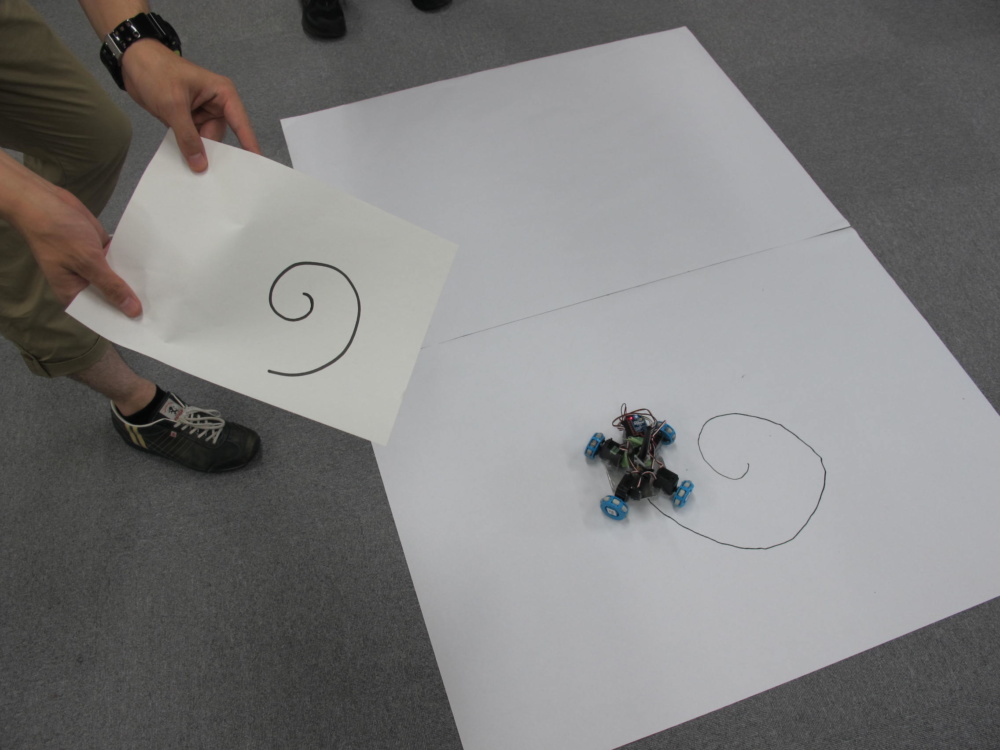The purpose of this research is to study a swarm of un-tethered “robotic printing heads” capable of printing (or scanning) in parallel over large and/or curved surfaces. These devices – either wheeled or flying robots – will facilitate printing in urban space (advertisement panels, signage, etc), as well as perform scanning of large, non planar architectural structures with a resolution never achieved before. The principles studied here could be extended and applied in the future to create an “intelligent printing ink” composed of swimming nano-bots.

Proof of principle, or Korokoro, the robot pantograph*
An Arduino-based holonomic robot (four omni-wheels using continuous servo-motors) was used for the untethered Robotic Printer Head. The robot is shown a drawing (for the time being the camera is not embedded) and a set of instructions to transform it (resizing/rotating…) is sent using Zigbee; with this information, the robot will proceed to draw the figure on the floor.
This prototype uses a single painting brush, but we plan to use a parallel printer head (eg. an inkjet printer head). In the future, a swarm of these Robotic Printing Heads (RPHs) may be capable of printing/scanning in parallel over large or even curved surfaces. Crawling over paper or… flying, they will facilitate printing on large urban spaces (panels, signage), as well as architectural scanning.
It is interesting to note that in the near-future, a swarm of microscopic nano-bots could be used to produce a print in parallel, if ever they could know their relative position with high accuracy on a page; therefore, the study of these parallel algorithms (based on broadcasting one’s own (presumed) global position, and adjusting it using more accurate, near neighboring tracking could form the base of a futuristic “intelligent printing ink” to print in two, or even three dimensions (there is a similarity here with morphogenetic gradients in developing biological organs).
(*) Idea: Alvaro Cassinelli. Prototype developed by bachelor students, under the supervision of Yoshihiro Watanabe and Cassinelli Alvaro. Teaching assistants: Takehiro Niikura Kenichi Murakami. Students: Reiji Takeuchi, Daichi Tanaka, Masahiro Hirano, Masahiko Yasui and Chihiro Watanabe. Project name by Tomoko Hayashi.
- Project description and grant proposal: Unthethered Robotic Printer Heads (RPH)

